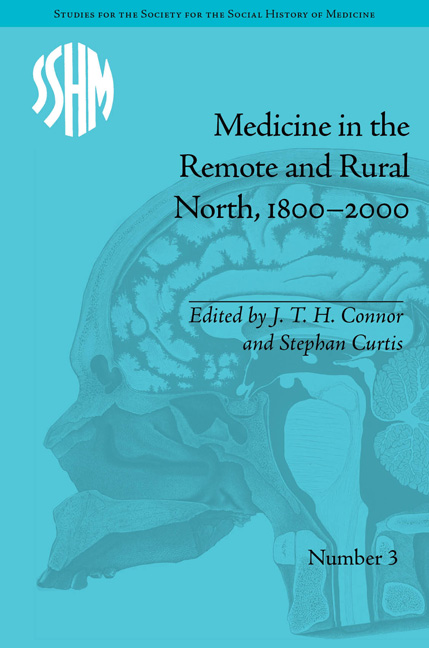Book contents
- Frontmatter
- CONTENTS
- Acknowledgements
- List of Contributors
- List of Figures and Tables
- Introduction: Cores/Peripheries – Rural/Remote: Medicine, Health-Care Delivery and the North
- Part I Remote Medicine and the State
- 1 Medical Services in a Northern Russian Province, 1864–1917
- 2 Changing Minority Culture: Health Services and Health Promotion in Northern Norway, 1900–50s
- 3 The Sami, Sami-ness and the Staffing of Health Services in Northern Norway, 1960s–2001
- 4 Foreshadowing the Future: Health Services in Remote Areas, the National Health Service and the Highlands and Islands of Scotland, 1948–74
- Part II Doctors and Doctoring in Remote Areas
- Part III Women, Health Care and the Practice of Medicine
- Notes
- Index
1 - Medical Services in a Northern Russian Province, 1864–1917
from Part I - Remote Medicine and the State
- Frontmatter
- CONTENTS
- Acknowledgements
- List of Contributors
- List of Figures and Tables
- Introduction: Cores/Peripheries – Rural/Remote: Medicine, Health-Care Delivery and the North
- Part I Remote Medicine and the State
- 1 Medical Services in a Northern Russian Province, 1864–1917
- 2 Changing Minority Culture: Health Services and Health Promotion in Northern Norway, 1900–50s
- 3 The Sami, Sami-ness and the Staffing of Health Services in Northern Norway, 1960s–2001
- 4 Foreshadowing the Future: Health Services in Remote Areas, the National Health Service and the Highlands and Islands of Scotland, 1948–74
- Part II Doctors and Doctoring in Remote Areas
- Part III Women, Health Care and the Practice of Medicine
- Notes
- Index
Summary
Russian zemstvo medicine is a purely social matter. Treatment by a doctor in the zemstvo is not a personal service to the patient at his expense, nor is it an act of charity. It is a social service.
M. Ia. KapustinThis paper investigates the organization of medical services under extreme conditions, in some northerly parts of European Russia during the era of zemstvo reform: the period of rural self-government that existed between 1864 and 1917. It concentrates on the north-western guberniya (province) of Olonets, now largely part of the Republic of Karelia. An area characterized by its remoteness, relatively harsh geographic and climatic conditions and meagre economic resources from which to finance medical services, Olonets was also perceived as ‘culturally backward’. Its inhabitants were often suspicious of or antagonistic towards outside influences, whether in the form of governmental authorities or would-be improvers in health, hygiene and medicine. Arguably, the reluctance of health-care professionals to work in such an environment aggravated matters, although there were also distinct attractions in practising zemstvo medicine. Given such contexts, the study has relevance to suggested ‘core and periphery’ and ‘distance decay’ issues (see the introduction to this volume) affecting health care provision in remote areas.
The wretchedness of Russian peasant life in the late nineteenth century, readily apparent to contemporary observers, has also been a reoccurring theme for modern historians.
- Type
- Chapter
- Information
- Medicine in the Remote and Rural North, 1800–2000 , pp. 21 - 38Publisher: Pickering & ChattoFirst published in: 2014

